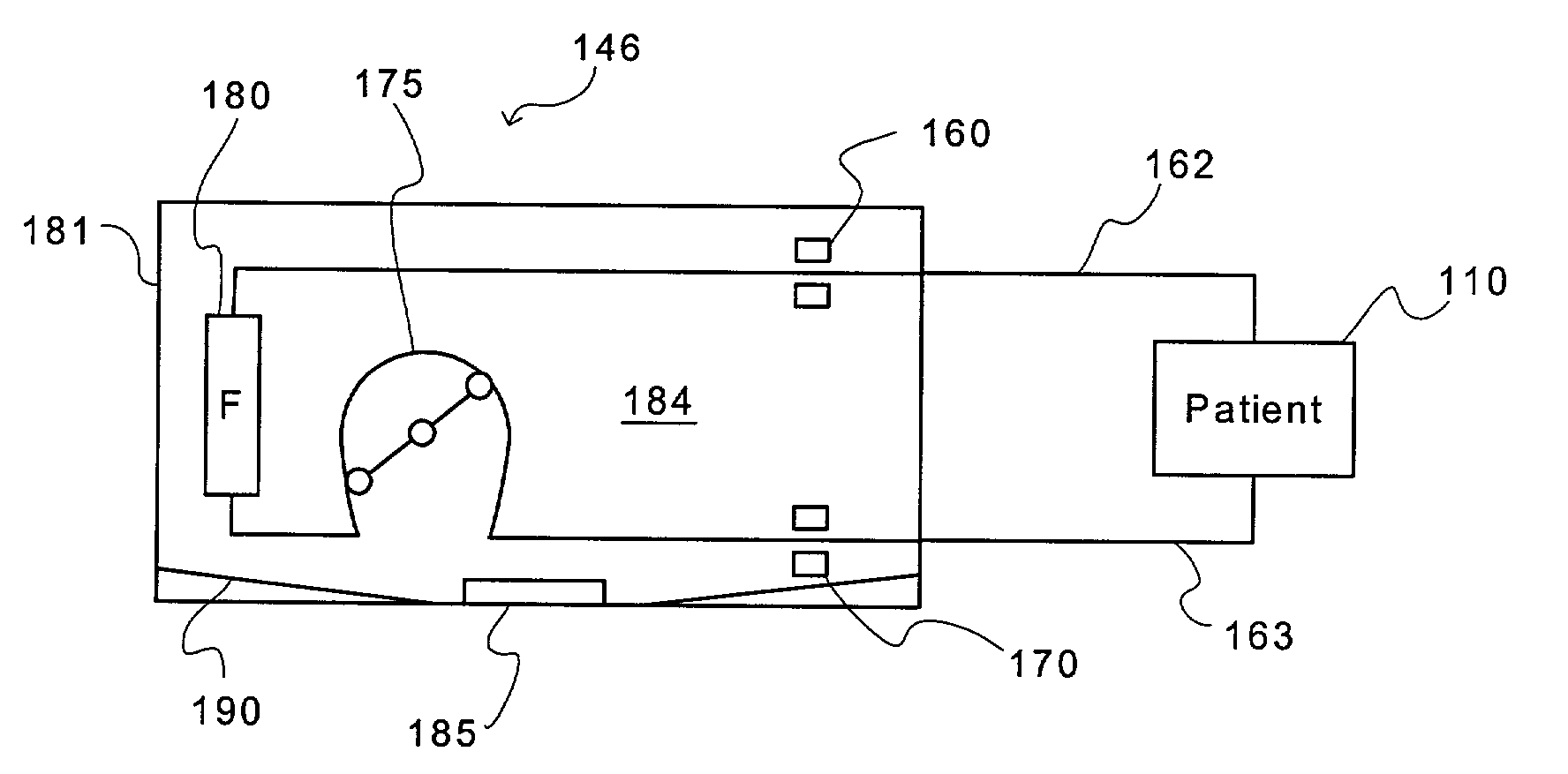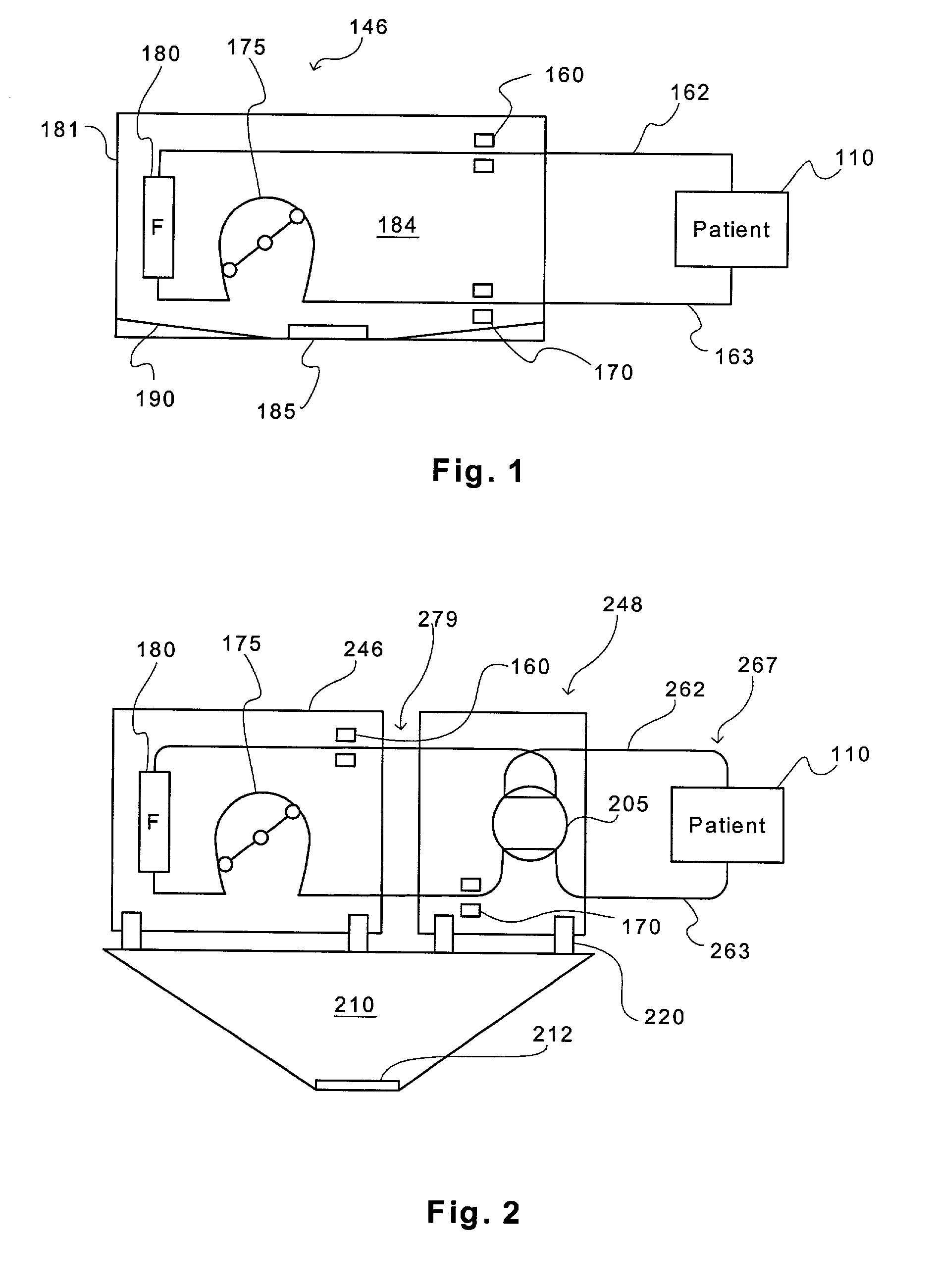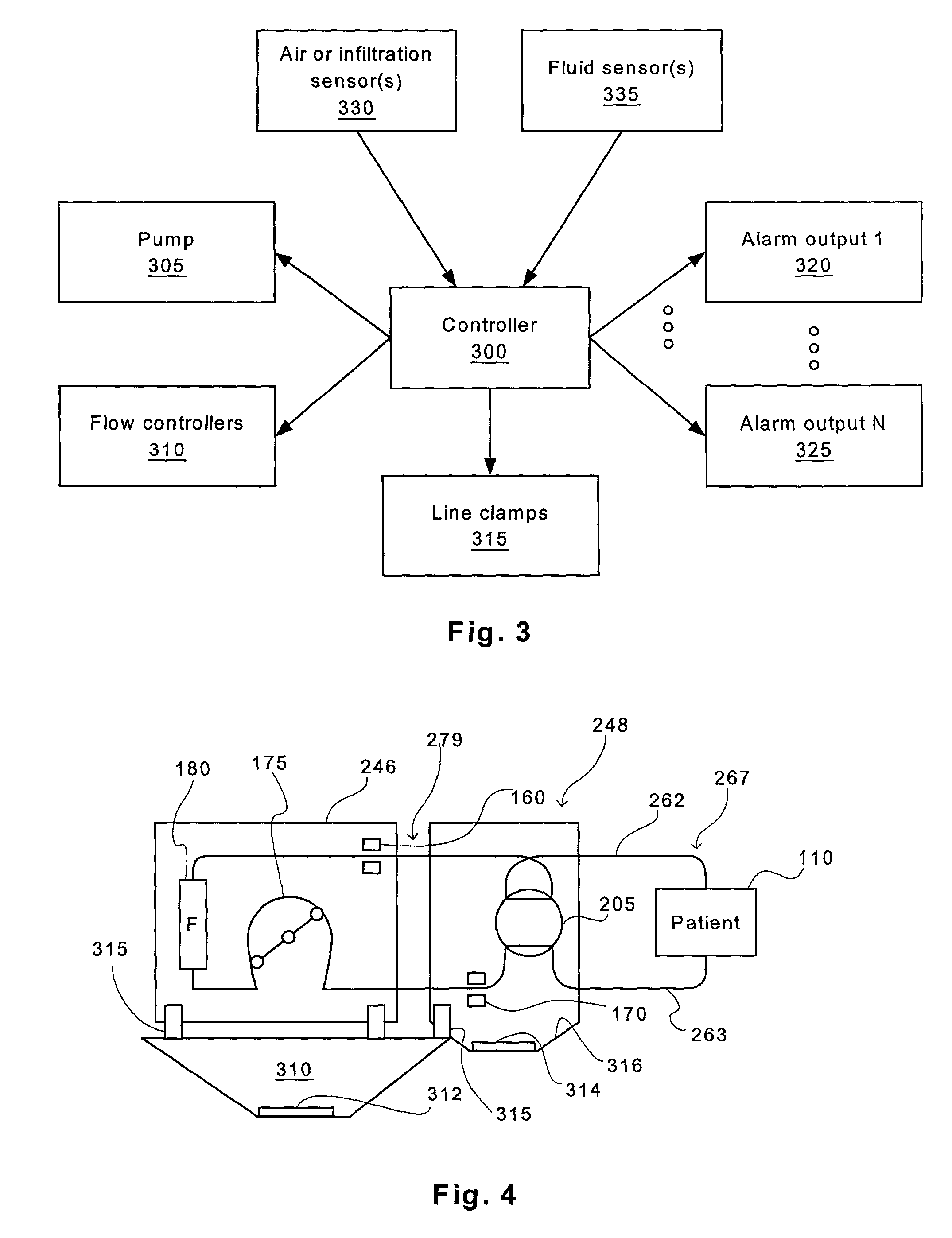Method and apparatus for leak detection in blood circuits combining external fluid detection and air infiltration detection
- Summary
- Abstract
- Description
- Claims
- Application Information
AI Technical Summary
Benefits of technology
Problems solved by technology
Method used
Image
Examples
Embodiment Construction
[0025]Referring now to FIG. 1, a blood processing machine 146 for treating a patient 110 has leak detection components built into it. The machine includes air sensors 160 and 170, a filter 180, and a reversible pump 175, the latter being one mechanism for reversing flow to test the return circuit as discussed in the patent application incorporated by reference above.
[0026]During operation, the pump 175 reverses periodically to test the normally high-pressure side 162 of the circuit. When the pump 175 reverses, a negative pressure is generated on the normally high-pressure side 162 of the circuit that will draw air into any leaks. The air will then be detected by air sensor 160. During forward operation, the air sensor 170 detects any leaks because air will infiltrate the normally low-pressure side 163 of the circuit. Thus, the two air sensors 160 and 170 quickly detect any leaks in when the pump is driven in forward and reverse directions, respectively.
[0027]Within a housing 181, a ...
PUM
 Login to View More
Login to View More Abstract
Description
Claims
Application Information
 Login to View More
Login to View More - R&D
- Intellectual Property
- Life Sciences
- Materials
- Tech Scout
- Unparalleled Data Quality
- Higher Quality Content
- 60% Fewer Hallucinations
Browse by: Latest US Patents, China's latest patents, Technical Efficacy Thesaurus, Application Domain, Technology Topic, Popular Technical Reports.
© 2025 PatSnap. All rights reserved.Legal|Privacy policy|Modern Slavery Act Transparency Statement|Sitemap|About US| Contact US: help@patsnap.com



